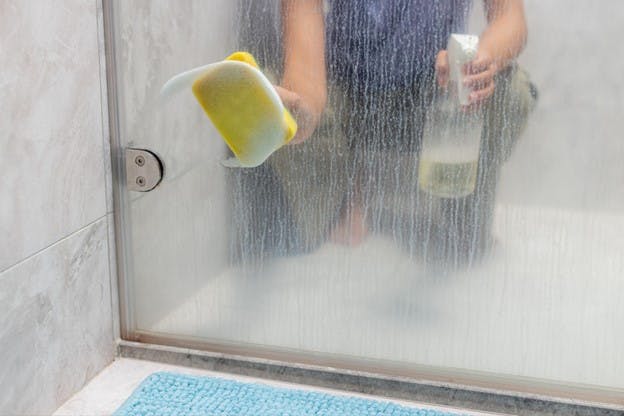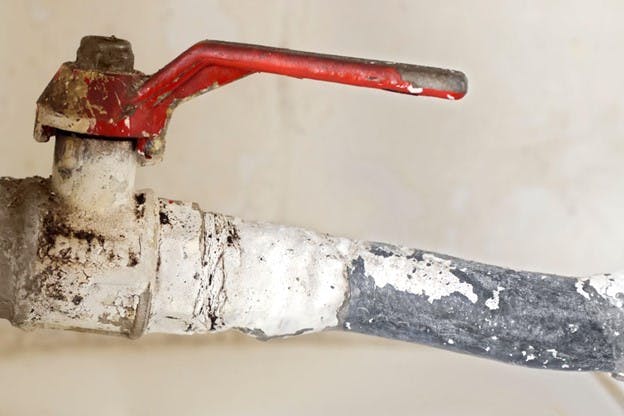October 2023
Tap Into Houston's 2022 Water Quality Report
When you turn on your tap in Houston, Texas, water just flows out. You may not think much more about it, but this feat requires a vast network of skilled people and a multi-billion-dollar infrastructure to make it happen.
Employees of Houston Public Works have to protect source water, maintain infrastructure, treat your water, and conduct thousands of tests. Each year, the results of all that work and testing are published in a publicly available water quality report.
If you’ve never taken the time to read this document, you’re not alone. It takes being a little obsessed with water quality to read a water report in your spare time. Luckily for you, we are those people. So after taking our own deep dive, we’ve decided to give you our top five key takeaways from Houston’s 2022 water quality report.
Here are five main takeaways about the quality of your drinking water.
1. Houston Water Quality Varies by Neighborhood
Like everything in Texas, the city of Houston is big. It’s a sprawling city and a lot of people call it home. In fact, it's the third most populated city in the country behind New York City and Los Angeles.
To handle the almost 500-million gallons of water Houstonians use each day, the public water systems are broken up into six districts. These districts are:
- Main System (464 million gallons daily)
- Kingwood (8 million gallons daily)
- Willow Chase (2.5 million gallons daily)
- District 73 (436k gallons daily)
- District 82 (109k gallons daily)
- Belleau Woods (150k gallons daily)
The Main System, which covers most of the city, uses three surface water treatment plants and 39 groundwater plants. It pulls its water supply from the San Jacinto River around Lake Conroe and Lake Houston, the Trinity River around Lake Livingston, and 104 different wells dug into the Evangeline and Chicot aquifers. The other five districts pull from a series of wells across the city while utilizing 16 additional groundwater plants.
The contaminants in source water can change over time. Contamination levels are also different depending on where water samples are pulled from. The annual water quality reports, also known as a Consumer Confidence Report (CCR), give an average contaminant concentration level across many water samples throughout the year from multiple locations.
It’s unlikely any single glass of water you pour will match the figures in the drinking water quality report exactly, or even be the same as someone a neighborhood over.
2. Houston Water Contains Arsenic and Lead
One of the main takeaways from the Houston 2022 water quality report is that your water can contain arsenic and lead. How much can depend on where your water comes from and your home’s plumbing.
Arsenic
Some areas of Houston have low levels of arsenic in the drinking water. While these levels are below legal action levels, the report acknowledges that legal may not mean safe. When the U.S. Environmental Protection Agency (EPA) sets action levels on contaminants, they must take into account the cost of removal as well as safety. This may be why the Environmental Working Group, who only looks at safety, says Houston’s arsenic levels are 528 times the recommended levels.
While the EPA allows up to 10 parts per billion (ppb) in public drinking water, they set the maximum contaminant level goal for arsenic at zero. Anything above zero has shown to present a health risk. In 2022, Houston maxed out at 7.6 ppb.
Arsenic can cause skin damage, circulatory problems, and even cancer. Luckily, minerals like arsenic can be filtered out of your water with a high-quality reverse osmosis water filter.
Lead
Lead is a toxic metal that was once widely used in plumbing throughout the United States. Its use was discontinued due to its toxicity for children and pregnant women. According to the EPA, there is no safe blood/lead level in children. Even a small amount can lead to behavioral issues, learning disabilities, and other brain and nervous system issues.
Like arsenic, the maximum contaminant level goal for lead is zero but the action level isn’t triggered until over 90% of lead tests in a district go above 15 ppb.
Belleau Woods had the most lead with 90% of tests coming in at or below 10 ppb.
While Houston Public Works has been replacing lead water service lines throughout the city, they can’t control whether your home plumbing contains lead fixtures. If you suspect you have lead in your plumbing, they recommend you regularly flush your pipes by running the water for 1-2 minutes if it’s been more than a few hours since the faucet has turned on.
They also recommend you get your water tested for lead. For more information on lead in your water and ways to manage and test it, call the Safe Drinking Water Hotline at (800) 426-4791. You can possibly even get free testing. To find out if you qualify for free water testing, take this survey.
Lead can be filtered out with a reverse osmosis water filter or specialized activated carbon filters that have been designed specifically for lead.
3. Houston’s 2022 Water Quality Report Shows Many Contaminants
Your tap water is drawn from rivers, lakes, wells, and other bodies of water that are exposed to the elements. This means it’s likely to pick up minerals, chemicals, microbial contaminants, and even radioactive materials from the environment.
Contamination from wastewater, septic systems, animal activities, and storm runoff can pose problems for public health. Farms and gas stations can complicate things further as pesticides, herbicides, and petroleum-based chemicals can enter the water supply.
While the Texas Commission on Environmental Quality (TCEQ) and other organizations are doing what they can to keep the watersheds clean, Houston Public Works still has to use several treatment techniques to keep drinking water standards high. Unfortunately, the treatment methods used are not mentioned in the Houston 2022 water quality report.
Here’s just a few of the contaminants the ‘22 water quality report says are in your water.
Disinfection Byproducts (DPBs)
DPBs are formed when chemical disinfectants interact with organic matter. DPBs like total trihalomethanes (TTHMs) and haloacetic acids (HAA5) can cause health problems, including cancer, if exposed to enough of them.
Radioactive Materials
Radium, uranium, and other radioactive materials can be found naturally in the ground or could be a byproduct of oil and gas operations. Both are found in Houston drinking water and can have harmful health effects, including increasing the risk of cancer.
Farm Runoff
Atrazine is a herbicide used on row crops. Though commonly used in the U.S., it’s been banned in 35 countries due to the risk of birth defects and cancer.
Atrazine, nitrate/nitrite from fertilizers, and various types of bacteria and viruses from animal waste end up in Houston’s drinking water.

4. Houston Has Very Hard Water
One notable takeaway from Houston's 2022 water quality report is that the city has very hard water. Water hardness is determined by the concentration of dissolved calcium and magnesium in the water. While anything over 180 parts per million (ppm) is considered very hard water, Houston’s Main System topped out at 236 ppm.
Hard water is not dangerous to ingest but it can wreak havoc on your home and skin. Hard water minerals stick to pipes, fixtures, and surfaces, causing buildup that’s hard to get rid of. That chalky feeling on your bathroom tiles and the spots on your coffee pot are from hard water.
Hard water can damage your clothes, create a layer of soap scum on your skin, make your water-using appliances work harder, and give bacteria and mold a way to grow on various surfaces.
Hard water minerals can’t be filtered out. You’ll have to use a water softener or salt-free water conditioner to manage the problem. If you live in Houston, softening your water will improve your quality of life.
5. Houston Water Has Low Fluoride
Houston is one of the few major cities in the United States that don't fluoridate their water. While there is some fluoride found in the source water, it is a much lower amount than recommended for dental health. Health officials recommend 7 ppm of fluoride while the Main System averages 0.3 ppm and maxed out at 0.8 ppm.
Fluoride is added to the water in many cities due to its ability to decrease the rate of dental cavities. Since it is not added to Houston water, if you want to protect your teeth, you can buy all sorts of fluoridated products from baby formula to toothpaste.
Get the Best Quality Water in Your Houston Home
The takeaways from Houston’s 2022 water quality report show that Houston is within legal limits on all contaminants they detailed. However, there’s certainly some room for improvement.
If you’re looking to take matters into your own hands and get the best water possible, HomeWater can help. HomeWater has a variety of American-made water filtration systems that are affordable and effective.
Houston residents would benefit from the UPSTREAM™ 4-Stage Whole Home Water Filter, which improves your water quality at every faucet in your home. It’s unique blend of red flint, KDF55, and catalytic carbon filters particulates, heavy metals, trihalomethanes, chlorine, VOCs, PFOS/PFAS, and more! Attach a salt-free water conditioner to take care of Houston’s hard water once and for all.
You’ll taste the HomeWater difference in each glass.
Related Articles
September 2023
Should I Use Filtered Water in My Baby Formula?
September 2023

